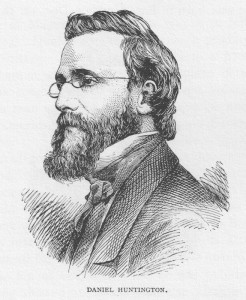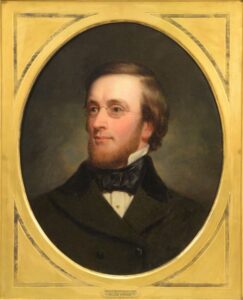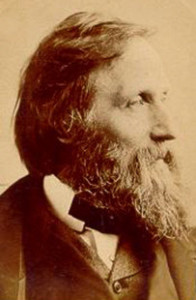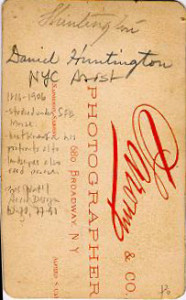After graduating from college, Daniel Huntington studied under Samuel Morse who was then president of the National Academy of Design. Huntington is probably best known for his portraits, though his landscapes elicited comment in The Crayon of May 1858:
“M. Huntington was born a landscape painter, and it is to be regretted that the pictures he paints in the high department of Art are not more frequent … His landscapes seem to be more the pastime of leisure hours than of steady laborious purpose … [He possesses] a recognition of the spirit and principles of light … as may be seen in the ‘Mill Pond at Chocorua,’ a painting exhibited at the National Academy of Design in the same year.”
Huntington was a member of the National Academy of Design from 1839 to his death in 1906, president from 1862 to 1870, and president again from 1877 to 1891. He exhibited at the Pennsylvania Academy of the Fine Arts from 1842 to 1868. He joined the Century Association in 1847 and was its president from 1879 to 1895. He was also vice-president of the Metropolitan Museum of Art for 33 years.
He often went abroad during his long career, traveling and sketching in Italy, England, and Spain. He seems to have particularly enjoyed painting Chocorua while visiting the White Mountains, making sketches there as early as 1854. A view he executed in 1860 was engraved by John Filmore. A friend of Benjamin Champney and the convivial group who congregated every summer in North Conway to paint and “talk shop,” Huntington was often in the White Mountains and produced many sketches of the area. He shared a studio with many associates at Jackson, New Hampshire maintained by Samuel Colman. Among those associates were George Loring Brown, Frank Henry Shapleigh, Asher Brown Durand, and Aaron Draper Shattuck.
Calling Card
The photograph of Huntington below was a typical “calling card” given out by the artist to those who might visit his New York studio. Displayed next to the photograph is the back of the card with his signature at the very top. Someone has written on this photo Huntington’s name and a brief biography of him.
- Daniel Huntington (1816-1906)
- Back of Calling Card: Daniel Huntington / NYC Artist [in script]
New Hampshire Scenery



